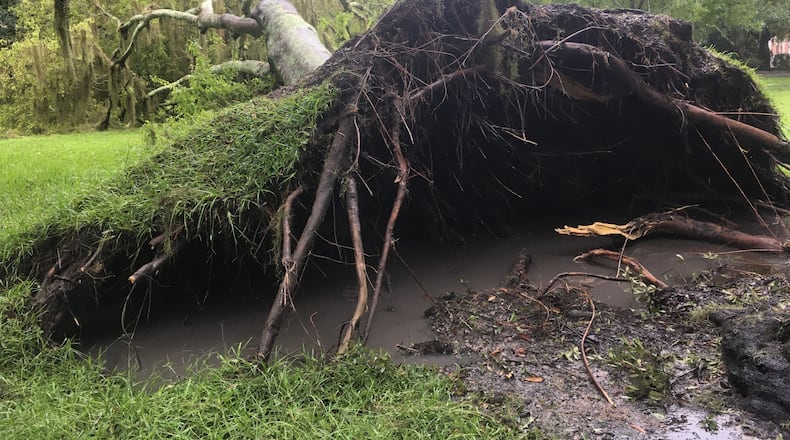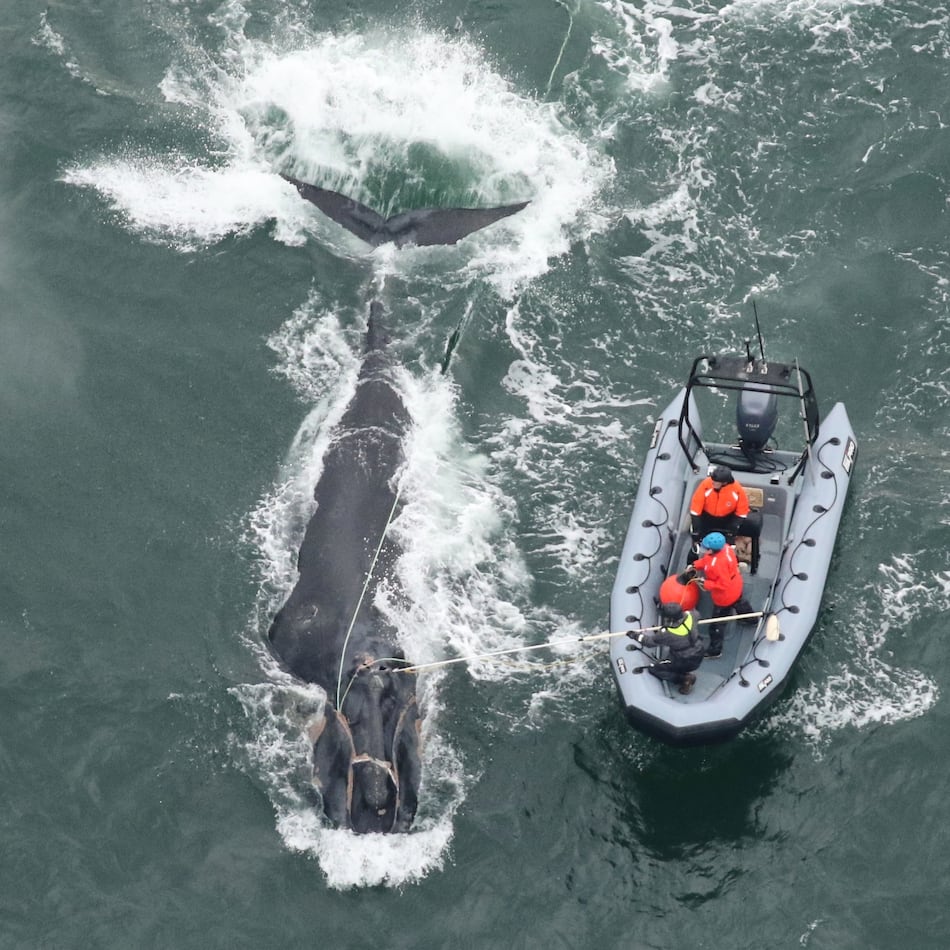A few hours before the arrival of Hurricane Irma, soon to be known as Tropical Storm Irma, Joey Spalding and Cheryl McDaniel met up with friends at Nickie’s 1971 Bar and Grill to cheer on the Atlanta Falcons and to clink shot glasses, bidding Irma to spare them from harm.
“My house needs so much work to keep water out, I couldn’t leave,” Spalding said Sunday evening, his muscles aching from four days of stuffing sandbags. Hurricane Matthew in October had turned the home he bought after that storm into an aquarium; after extensive renovations he was determined to stay put through Irma.
“I’m just hoping what we did works,” he said.
It didn’t.
After losing power before dawn, McDaniel related a harrowing update at midday Monday.
“We had to leave,” she said. “Water started flowing in the house even after all we did ahead of time.”
With the island marooned from the mainland, there was nothing to do but wait for the water to recede.
“We’re sitting in the truck with the dogs at the top of our street,” she said. “It’s so sad. We still can’t get down the street.”
MORE: Glynn County is shut down due to Irma
Early forecasts suggested Irma would slam Georgia’s coast with an even greater force than Matthew did, so the later indications that Irma had shifted so far to the west initially seemed like cause for a breather. Not so. Flooding on the island actually has been worse than during Matthew, Tybee Island Mayor Jason Buelterman said.
“Power will not be restored on Tybee until (Tuesday) at the earliest,” said Buelterman, who helicoptered in from the mainland to inspect storm damage and has been keeping residents apprised with posts to his public Facebook page. “The causeway took a beating.”
It’s not clear when people might be able to come or go, he said.
The moon is partly to blame for Tybee’s woes.
“We have received quite a bit of flooding in Chatham County,” Dennis Jones, the director of the county’s Emergency Management Agency, said during a Monday afternoon briefing. “This was a king tide, so with that king tide and the storm surge, plus the heavy amount of rain that came in, there is considerable flooding.”
The storm surge reached 4.7 feet. A king tide, as it’s known colloquially, is an especially high tide that coincides with a full moon. Unfortunately, it also coincided with Irma, and the storm surge combined with the tide resulted in swells of up to 15 feet. The tide gauge at Fort Pulaski, on the causeway in between Savannah and Tybee, registered nearly 11.7 feet at midday, or more than 3.4 feet higher than normal.
It seemed to take some folks by surprise. Tybee resident Mack Kitchens, who went kite surfing with his buddies in the unusually choppy waves on Saturday, had nonchalantly chuckled at the thought of evacuating. Monday afternoon was a different story.
“Holy crap, it is like the wind has switched directions and the storm turned right back on again,” he said. “It was really calm and it seemed like it was passing us by, and then, bam!”
“Some areas of Chatham County may experience two feet of water above ground and isolated areas may have water greater than six feet,” an alert said.
The storm brought winds along with water, and Savannah got good and walloped, too. One huge tree came crashing down on a historic home on 51st Street in the Ardsley Park neighborhood. Around the corner, another tree came down in a park between Atlantic and Washington avenues. Parts of a giant magnolia blocked a residential road off Habersham Street, a statuesque palm lay prostrate in the middle of the city’s famed Forsyth Park, and all around town, smaller limbs and clumps of Spanish moss were strewn about.
Downtown, portions of the River Street district popular with tourists was more river than street. A car unfortunately left parked near the Talmadge Memorial Bridge was almost entirely submerged, and water lapped at the cobblestones in front of normally busy restaurants and shops.
A tornado watch has ended, but Georgia Power reported outages still affecting thousands of customers. More than 2,100 residents were bused out of town via official evacuation operations, in addition to the unknown numbers of people who left on their own. Jones, the emergency management director, didn’t have specific guidelines regarding when people should feel free to return.
“We need to see what damages are out there,” he said. “We need to see what areas are accessible or inaccessible. We want to make sure everybody is safe.”
About the Author
The Latest
Featured





